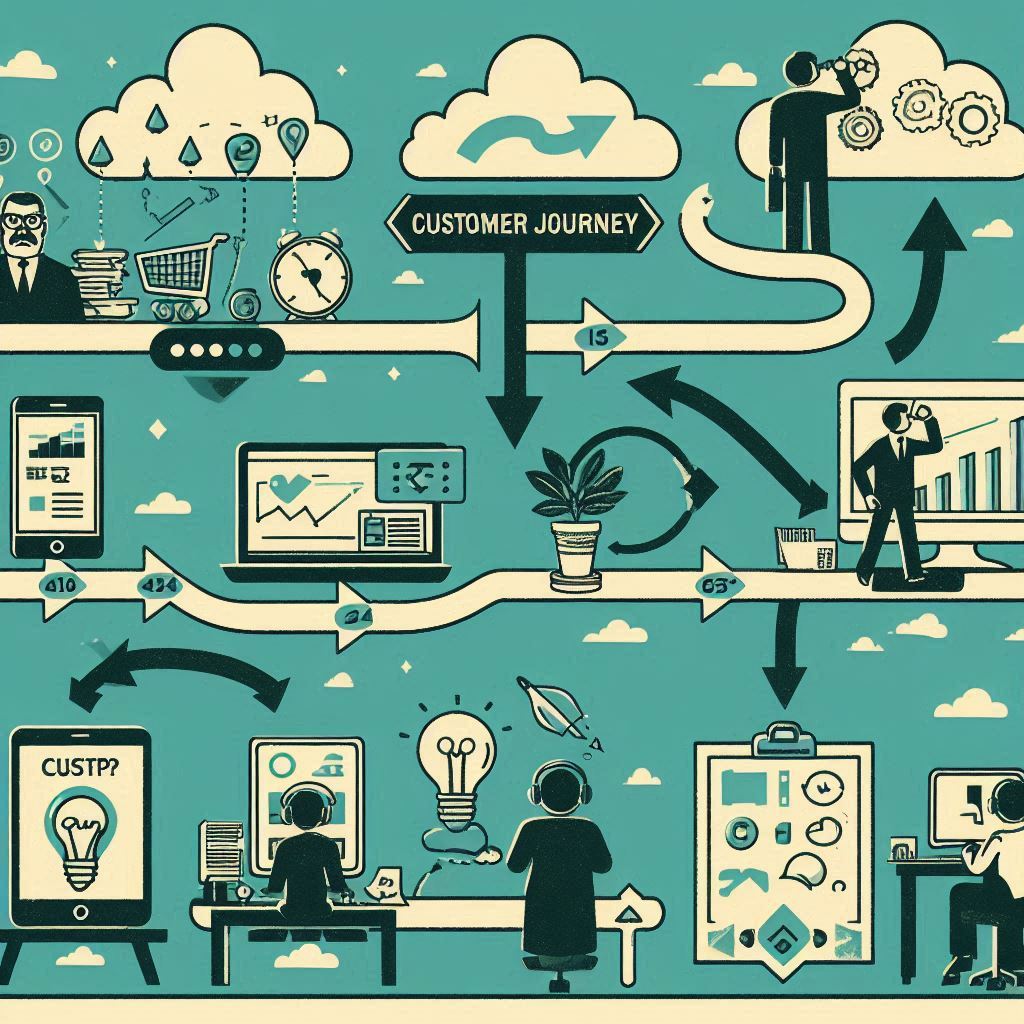Are you struggling to integrate AI solutions into your customer journey map? You’re not alone. Many marketing heads find it challenging to balance traditional marketing fundamentals with the latest AI innovations. This guide will walk you through the process on how to create a customer journey map step by step, ensuring you cover all bases and enhance your customer experience.
Key Takeaways
- Understanding the importance of mapping out each touchpoint in the customer journey is crucial.
- This guide will help you learn how to gather and utilize customer data effectively.
- Additionally, you will discover how to integrate AI solutions into your customer journey map, making your strategies more efficient and data-driven.
Understanding the Customer Journey
Before diving into the creation of a customer journey map, it’s crucial to understand what a customer journey entails.
The customer journey is the complete sum of experiences that customers go through when interacting with your company and brand. It includes every touchpoint, from the initial awareness stage to post-purchase interactions.
In the past, marketers relied on linear funnels to map out customer journeys. However, with the advent of AI and the complexity of modern consumer behavior, the “Google Messy Middle” concept has emerged. This concept highlights the non-linear, chaotic nature of customer decision-making processes, making it essential to map out every possible touchpoint. More information can be found in my article the traditional funnel is replaced by the messy middle
Gathering Customer Data
To create an accurate customer journey map, you need to gather comprehensive customer data. This data can come from various sources, including website analytics, customer feedback, social media interactions, and CRM systems.
The goal is to understand your customers’ behaviors, preferences, and pain points.
Utilizing AI tools can significantly enhance your data collection process. AI can help analyze large datasets, identify patterns, and provide insights that might not be immediately apparent. This data-driven approach ensures that your customer journey map is based on real, actionable insights.
Creating Customer Personas
Once you have gathered sufficient data, the next step is to create customer personas. These are semi-fictional representations of your ideal customers, based on the data you’ve collected.
Each persona should include demographic information, behavioral traits, goals, and pain points.
Creating detailed personas helps you understand your customers better and tailor your marketing strategies to meet their specific needs. Remember, the more accurate and detailed your personas are, the more effective your customer journey map will be.
Mapping Each Touchpoint
With your customer personas in hand, it’s time to map out each touchpoint in the customer journey. Start by identifying all the stages your customers go through, from awareness to consideration, decision, and post-purchase. For each stage, list all the possible touchpoints, such as website visits, social media interactions, email communications, and customer service calls.
It’s essential to consider both online and offline touchpoints. For instance, a customer might first learn about your product through a social media ad, visit your website for more information, and then make a purchase in-store. Mapping out these touchpoints helps you understand the complete customer experience and identify areas for improvement.
Analyzing and Refining Your Map
Once you’ve mapped out all the touchpoints, the next step is to analyze and refine your customer journey map. Look for any gaps or pain points in the journey and identify opportunities for improvement. For example, if customers frequently abandon their carts at the checkout stage, you might need to simplify the checkout process or offer additional payment options.
AI can play a crucial role in this analysis. By leveraging AI tools, you can gain deeper insights into customer behaviors and preferences, allowing you to make data-driven decisions. Continuously refining your customer journey map ensures that it remains relevant and effective in meeting your customers’ needs.
Conclusion
Creating a customer journey map is a vital step in enhancing your customer experience and driving business growth. By understanding the customer journey, gathering comprehensive data, creating detailed personas, mapping out each touchpoint, and continuously refining your map, you can ensure that your marketing strategies are aligned with your customers’ needs.
Ready to take your customer journey mapping to the next level? Visit weknowthingsmarketing.com for more insights and resources. Let’s connect the dots between good old marketing and the latest AI innovations to create a seamless customer experience.
FAQ
Q: How can AI enhance my customer journey map?
A: AI can analyze large datasets, identify patterns, and provide actionable insights, helping you create a more accurate and effective customer journey map.
Q: What is the “Google Messy Middle”?
A: The “Google Messy Middle” refers to the non-linear, chaotic nature of modern customer decision-making processes, highlighting the importance of mapping out every possible touchpoint.
Q: How often should I update my customer journey map?
A: It’s essential to continuously refine your customer journey map to ensure it remains relevant and effective. Regular updates based on new data and customer feedback are recommended.



